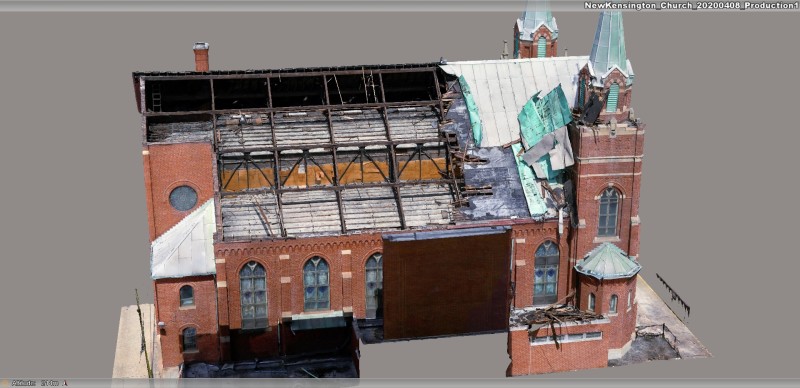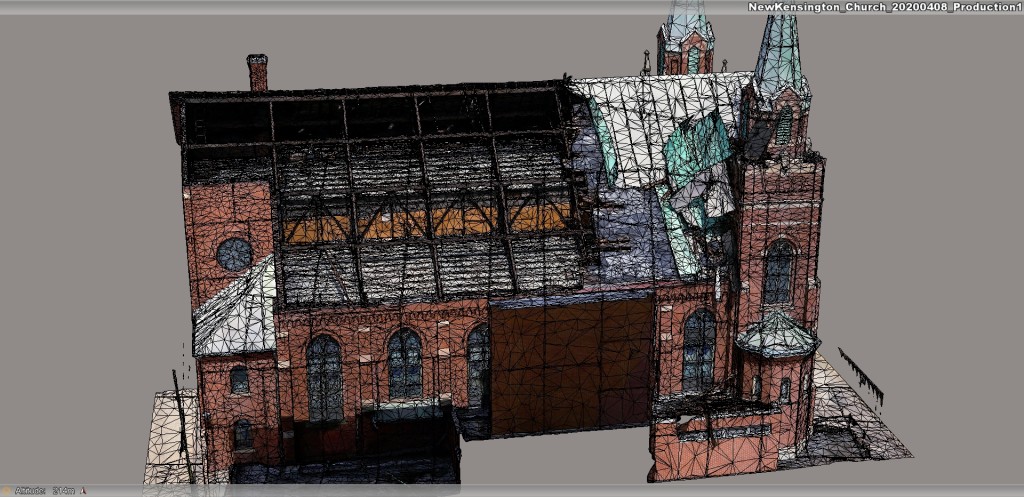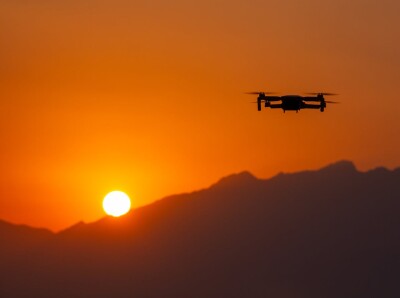Commercial UAV News has spoken about the impact of COVID-19 on our ability to conduct business as usual, supply chains have been interrupted, social distancing rules have forced many companies to learn how to work remotely for the first time, and those who do go into work are trying to learn how to do it safely. Many businesses who have been slow to adopt new technologies and workflows are beginning to reexamine how they go about running their companies. Yet convincing these companies to invest in new technology has less to do with providing a short-term fix and more to do with making a financial and operational case for long-term sustainability and stability—in a time of financial hardship, companies are usually not going to invest in something that doesn’t provide long-term return on investment.
This is something Jake Lydick, CEO and Founder of Eye-Bot, understands well, which is why he is using this time to reach out to businesses and organizations, especially those who have been hard hit by the pandemic, to demonstrate what 3D, engineering-ready models can do for their businesses for the long term. Lydick believes that managing assets remotely is not only a way to keep people safer today in these unique times but is also the future of how we go about managing and protecting our assets.
We spoke with Lydick to learn more about his business, his ideas about how 3D models can enhance workflows now and, in the future, and much more.
For people who are new to your company, can you tell a little bit about what your company does, the services you offer, and the key differentiators from other similar companies out there?
We were born as a commercial drone provider. Initially, we felt like there was more use cases there. We specialize in highly detailed 3D reality models that people can use to make better decisions, interact with their assets remotely, save time and money, and keep people safer.
In terms of key differentiators, we are a lean organization and we have developed a professional services/training & certification package that will allow a remote operator to understand and perform the specific types of captures that we need to create these engineering-models. So, we have a way to scale.
If somebody needs to do dimensional control on a module for a manufacturing facility in, let’s say, Thailand, then there’s a system that we’ve created that enables a local operator to enhance their capabilities to collect that data. They then send that quality raw data back to us, and we process it and do the quality control on it. So, we are prepared to scale, however big it gets.
We offer an advanced, rich product that is accessible to anyone and it can be utilized now.
You mentioned about keeping people safer, this idea has taken on all whole new meaning in this pandemic, what are some of the key ways that technology like yours can keep people safe right now?
There’s a historical use case for safety. We are able to give somebody a virtual representation of a facility, asset, or critical infrastructure, and then they can either interact with that asset remotely or not. Often times, there is a good chance that, with the capabilities of our 3D interface, they may not need to visit the site at all. And if they do have to visit a site, they can use the 3D graphical interface to familiarize themselves with the site and make the visit a lot less painful. It can also help them decide who needs to be on site so that they can control the number of people who have to physically be there.
Reducing the need to visit a site has always been relevant and a value proposition that has always been there, but this has become even more relevant during COVID-19.
What are the key markets that your company services and caters to?
We got our start with a multi-year contract with an oil and gas super major. During that time, we flew over the tops of massive, multibillion-dollar facilities, and were able to explore all the different use cases, with a primary focus on 3D models.
We learned how people were using it and why people were using it, and this enabled us to get a good grasp on how to operate on large-scale projects. This experience told us a lot about what the rest of our offerings would look like to neighboring industries or cities.
The Smart City initiative is also a conversation we want to be a part of. We understand the use cases from a capital project viewpoint, and the value proposition of running a county or city is similar to managing a critical asset and its operation lifecycle. We are trying to expand into those markets, but it has been primarily heavy industry – construction and infrastructure, telecom/utilities and energy, and oil and gas being the real meat of our business. We’ve had an awesome experience getting our feet wet on a giant project that was original to us.
In what ways do you think the COVID-19 crisis is changing the way companies are looking at technology like yours?
Right now, there are massive construction projects that are working with skeleton crews or there is nobody there at all, and there are plants and facilities that are operating with very limited personnel. There are a host of things that they can access remotely from a graphical interface based in 3D on our geoXD™ visualization interface, which is web-based, easy to use, and intuitive. They can obtain a detailed virtual display of critical areas. They can check to see if something is settling, moving, or eroding or monitor their facility with a myriad of remote sensors. The data can be made available to anyone within the graphical interface. I could talk for hours on the applications, but the key point is that this is a time that being able to reduce site visits and travel by providing staff with engineering-grade reality models is invaluable.
COVID-19 is affecting a lot of businesses right now, what are some ways that Eye-Bot is able to help companies stay operational now and, in the future, when this pandemic is over?
We want to be waving the flag that we can do this right now. It is accessible, we have a longstanding track record that we can do this safely with a fast turnaround time. It is a low cost, high-value solution that people should be able to find a budget for because it is going to enable them to do something like they’ve never done before.
Everyone is having to do the remote thing right now. I think coming out of this, people are going to be doing things differently. I want to be part of that, and I think we can help with that. Being able to work with an organization with something that has a tremendous amount of value and seeing them use it, especially in a time of desperation right now, it feels great and its why we are here.
To give an example, we had a tornado touchdown the other night, and there was significant damage. The local paper wrote that due to the Coronavirus, they were not able to put the team on the ground to assess the damage. One of the buildings that was affected was a 100-year-old church.

The tornado tore the roof off, the steeple was leaning over, and the brickwork was messed up. We were able to go in there, drop a couple of control points, and build an engineering-ready 3D analysis of that building with in 24 hours. The town can now go back and check it against their original drawings and plans to assess the damage. We are going to make it available through geoXD™ to whoever wants it.
Although this is a unique situation in a strange time, the point is that this is the future of doing things. This is what technology is enabling us to do right now. This is just a really good example of exactly how we want to utilize the technology.
If there is one thing that you’d want interested end-users to know about your solutions, what would that be?
I want to communicate that there is a way for everyone who agonizes about their critical assets or critical infrastructure to access, collaborate, and communicate about their assets, without being there with our geoXD™ visualization platform. You can have remote access to manage your critical assets, or whatever is important to you, through this visual and intuitive interface. Essentially, there is a huge data set available to anyone who wants it, and it can help you remotely access the things that you care about.
If end users want to know more how can they connect with you to find out more?
Customers and partner integrators alike, if they want to know more they can check out www.eye-bot.com to get educated on the basics, we are also out there on social media networks, and people who want to talk more can also contact me directly at [email protected].




.jpeg.small.400x400.jpg)











Comments